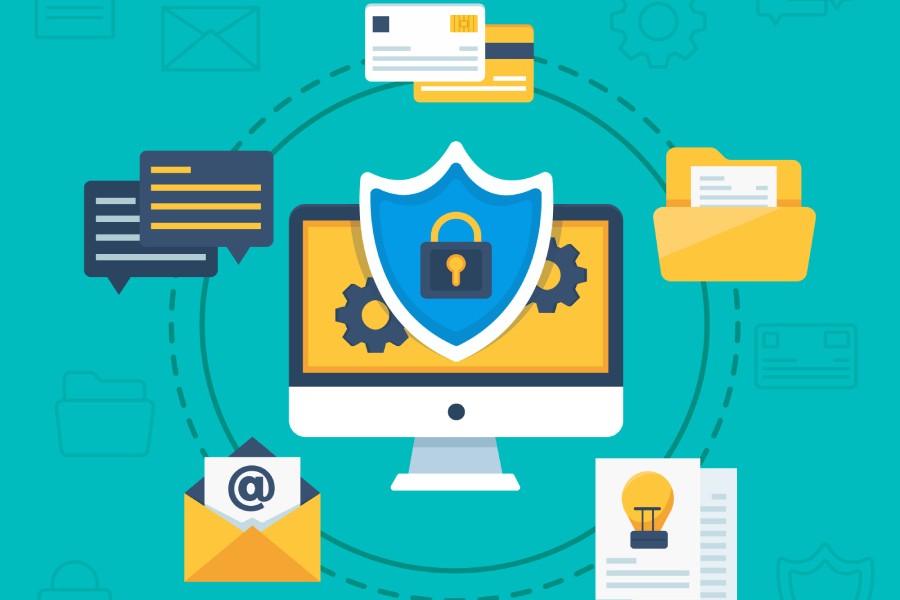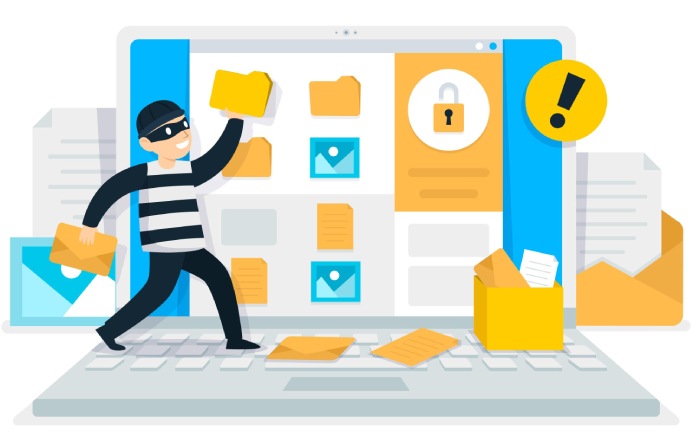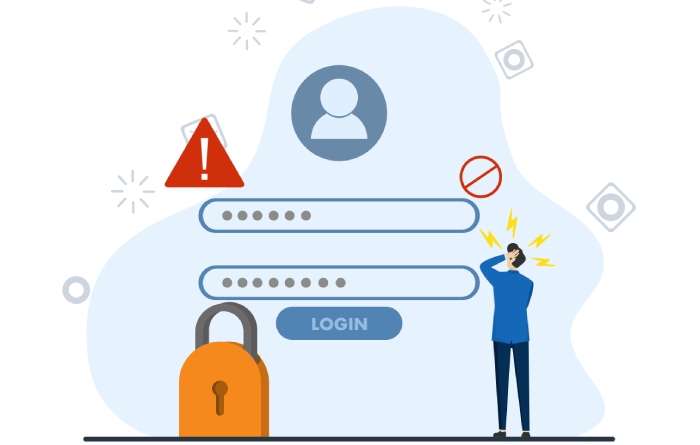As a small business owner, you know that your company’s success can hinge on the security of its data. But did you know that email is one of the cybercriminals’ most common entry points? According to Tessian, 96% of phishing attacks occur through email. That’s why small businesses need to be aware of – and protect themselves against – potential email security risks.
In this article, we’ll discuss seven common email security risks facing small business owners today and how they can defend against them. After that, it’s time to arm yourself with the knowledge needed to keep your business safe.
Spear Phishing
Spear phishing is an email security risk that small business owners must be aware of. It’s a cyber attack targeting a specific individual, organization, or group. Unlike traditional phishing attempts, spear phishers use personal data and research to make their emails appear more legitimate and believable to gain access to sensitive information like usernames, passwords, financial data, and more.
The best way for small business owners to protect themselves against spear phishing attacks is to educate their staff about the dangers of clicking on suspicious links or downloading unknown files. Employees should also be trained to spot the signs of a fraudulent email.
Some common signs include misspelled words or phrases, generic greetings (e.g., “Dear Customer”), requests for personal information such as Social Security numbers or bank account details, requests for payment outside of normal channels (e.g., untraceable money transfer services), offers too good to be true (e.g., “Win a free vacation”), and links pointing to websites with unusual URLs or poor spelling and grammar on the page.
Small businesses should also invest in email security software to filter out malicious emails before they reach employees’ inboxes. This software can detect threats like phishing scams by scanning emails for spam content, malicious attachments, and suspicious URLs.
Finally, companies should establish clear policies regarding email communication internally and externally. This includes mandating strong passwords that are updated frequently as well as clearly defining acceptable uses of company emails, such as inappropriate language or personal conversations between staff members that could lead to data breaches if exposed publicly.
Email Spoofing
Email spoofing is when a hacker sends out emails that appear to be from an official source, such as your bank or other organization. It’s an email security risk because hackers use it to try and get you to open the email and click on malicious links or attachments. They can also use it to steal confidential information, such as passwords, credit card numbers, and usernames.
According to Ben Michael, Practicing Lawyer and Founder of Michael & Associates, “Email spoofing is a serious threat to small businesses and something that companies should take steps to protect themselves against.”
Small business owners face especially high risks when it comes to email spoofing. Hackers may target small businesses because they know they often have less secure systems, making them easier targets than larger organizations with more sophisticated cybersecurity protocols.
Using email security protocols and tools is the best way to defend against email spoofing. By setting up a secure mail server, businesses can protect their emails from being intercepted by hackers. An email encryption service can also help ensure that emails cannot be read or manipulated in transit.
Businesses should also verify any incoming emails before clicking on links or opening attachments and keep all software and operating systems up to date with the latest security patches. Finally, small business owners should consider implementing two-factor authentication for email accounts to make it more difficult for hackers to gain access.
Malware Infections
Malware infections are computer programs or pieces of code that can cause damage to devices and their data. They’re an email security risk facing small business owners because criminals might use malicious emails to access sensitive information, such as customer credit card numbers or employee records.
One way to defend against malware is through email scanning, which involves scanning incoming and outgoing emails for malicious links or attachments. If a malicious file is detected, it can be blocked from entering the system, minimizing the risk of infection.
Small business owners should also consider using antivirus software on all their devices — this will help detect malicious applications that might have been downloaded unknowingly. It’s also essential to keep all software up-to-date with the latest security patches; some viruses exploit vulnerabilities in outdated software versions.
Ransomware Attacks
Ransomware is malicious software that seeks to extort money by locking access to computer data until a ransom is paid. It’s an email security risk that small business owners should be aware of, as it’s becoming increasingly commonplace (and can often lead to dire consequences like bankruptcy). What makes ransomware even more dangerous is the fact that it takes multiple forms and can come from various sources, making it harder to defend against.
Ransomware attacks are typically deployed through phishing emails or malicious links that may appear legitimate. However, when clicked, the malware encrypts all the files on your hard drive, leaving you unable to access your data unless you pay the ransom. Once installed, ransomware can also spread to other devices in your network.
“To help prevent ransomware attacks, small business owners should consider implementing a comprehensive backup and recovery plan, says Tom Golubovich, Head of Marketing & Media Relations of Ninja Transfers. “Regularly backing up your files will ensure that if you do become the victim of a ransomware attack, you will have access to all your data and can restore it quickly.”
The best way to protect yourself and your business from ransomware threats is by being proactive about security. This means scanning for potential threats regularly and updating your software with the latest patches and security updates.
Additionally, it’s vital to ensure everyone in your organization knows how phishing emails work and how they can spot them before clicking on any suspicious links or opening any attachments sent via email. Proper employee training will go a long way toward reducing the risk of ransomware attacks within your organization.
Unsecured wi-fi Connections
Unsecured wi-fi connections don’t require a password to access the internet connection. This is common in cafes, hotels, airports, and other public spaces. Unfortunately, while they may seem convenient and free, especially when just starting a business, unsecured wi-fi connections pose a serious security risk for small business owners sending or receiving emails. Unfortunately, while they may seem convenient and free, especially when just starting a business or reviewing business plan templates, unsecured wi-fi connections pose a serious security risk for small business owners sending or receiving emails.
When you use an unsecured connection, all the data passing through it is broadcasted out into the open air, meaning that anyone with malicious intent can easily intercept it and steal confidential information such as passwords and account numbers.
What’s worse is that because this type of attack occurs over a wireless connection, the hacker can still access sensitive data even if they’re not physically close to you—they just need to be within range of the same unsecured network.
The best way for small business owners to protect themselves from these attacks is to use secure wi-fi networks whenever possible. Look for networks that require a password before allowing access; these will typically have some form of encryption enabled on them so that any data sent or received over it will be safe from prying eyes.
Furthermore, consider using a virtual private network (VPN) service when connecting to public wi-fi networks—this will add an extra layer of security by encrypting your online activity even further. Finally, ensure you only send confidential emails over a secure network or through an encrypted email provider to keep your messages as safe as possible.
Insider Threats
Insider threats can be defined as any malicious activity carried out by an employee or insider of a business. They are one of the most significant email security risks that small business owners face, as they can easily be taken advantage of due to their lack of resources and inexperience in dealing with these types of threats. Insider threats can range from data breaches, stolen passwords, or malware attacks to disgruntled employees leaking confidential information.
Small businesses can defend against these types of threats through strong multi-factor authentication systems. Authentication systems help protect the organization’s email system from unauthorized access by requiring users to provide multiple forms of proof before they are granted access to confidential data.
This could include two-factor authentication, which requires the user to provide a username and password and a one-time code sent via text message or email.
In addition, businesses need to have sound policies for employee conduct. These policies should include clear rules about what information employees can share with outsiders and what activities are prohibited within the workplace. Moreover, businesses must monitor their emails and employee behavior regularly so they can quickly identify any suspicious activities.
Jarret Austin, Owner of Bankruptcy Canada, says, “Treating email security as a priority for businesses is essential. Businesses must have the right tools, policies, and procedures in place to protect themselves from malicious threats. Taking the extra time and effort to ensure your emails are secure is well worth it in the long run.”
It’s also wise for companies to invest in software solutions designed specifically to detect insider threats, such as data loss prevention (DLP) tools. DLP tools help organizations detect inappropriate use or unauthorized access to sensitive data.
Password Mismanagement
Password mismanagement is a serious email security risk that small business owners should not take lightly. It refers to using weak passwords, sharing passwords, and using the same password for multiple accounts. This increases the risk of unauthorized access to confidential data and can have serious consequences for businesses of all sizes.
Weak passwords are easily guessed and are not secure enough to protect sensitive information. Common examples include using personal information such as birth dates or pet names or plain texts like “password” or “12345”. Sharing passwords with anyone other than people who need them also increases security risks.
To defend against these threats, small business owners should always use strong passwords and never share them with anyone they don’t trust. Strong passwords consist of at least 12 characters, including letters (both upper-case and lower-case), numbers, symbols, and spaces. It’s also essential to use different passwords for each account so that if one is compromised, it doesn’t put any other accounts at risk.
Additionally, it’s wise to enable two-factor authentication on all accounts where possible, as this adds an extra layer of protection in case someone does manage to guess a password correctly. Finally, small business owners should ensure their antivirus software is up-to-date and regularly run scans for malicious software which may be trying to steal their data or hijack their accounts.
Wrap Up
Small business owners face many security risks regarding email, but with the right strategies, they can protect their organization from these threats. By using strong authentication systems, implementing sound employee policies, investing in detection tools, and providing regular security training, they can help ensure that their confidential data remains secure. These steps will help small businesses keep their email communications secure and protect them from malicious attacks.


